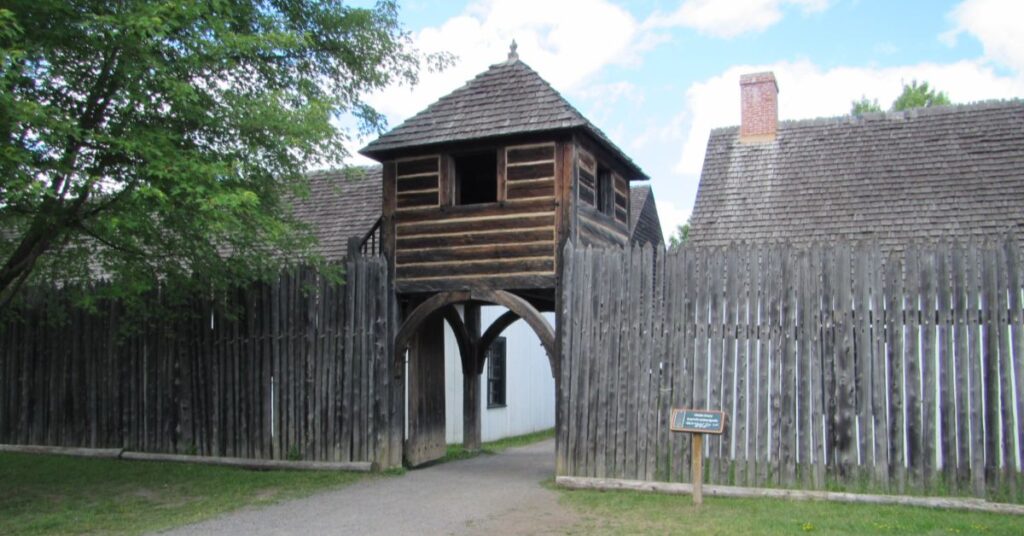When we were in Quetico Provincial Park we met some people, at the dog beach, who lived in Thunder Bay. They told us about a few places they liked to camp: Sleeping Giant, Pukaskwa National Park, and for something different they suggested Fort William in the city of Thunder Bay. So, off we go…
The Fort William campground is in the middle of a field, a short walk from the visitor centre. There are a couple of tents and one other RV, but the campground is basically deserted. We arrived on a Saturday afternoon and the parking lot next to the visitor centre looked busy, so we were a bit surprised that they’re wasn’t much activity in the campground. All the better for us!
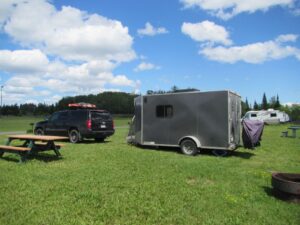
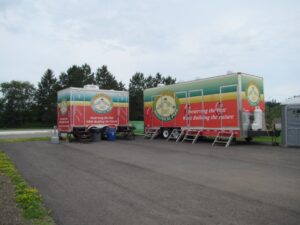
We had read some reviews about the campground on the way here, and one of the negatives was the facilities. The washrooms and showers are located in trailers! Marine flush toilets and private shower rooms. Lots of hot water and no requirement to feed loonies into a slot to keep the water flowing. All good!
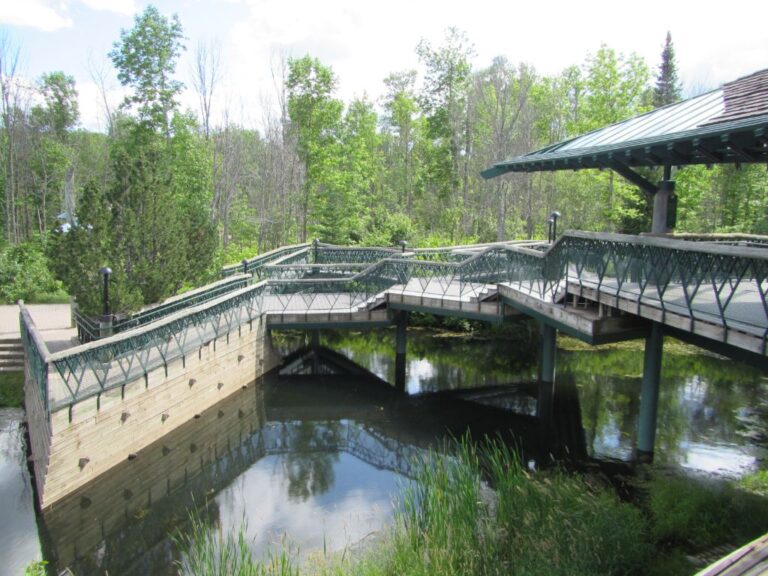
The visitor centre was modern and the decks off the back, leading to a trail to the fort, were quite impressive.
This historical park was originally created in 1973, but the facilities and the fort itself have been meticulously maintained.
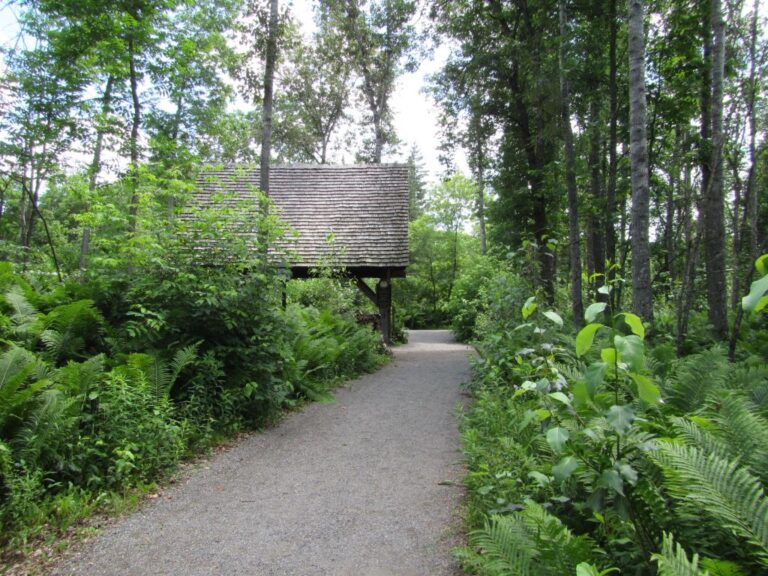
As we strolled down the path we came upon a post and beam structure with a roof, but no walls. An unlit, but obviously used, firepit was located under the roof. We were accosted by an individual wearing clothing from the early 1800’s, and he proceeded to give us some background of the fort we were about to visit. The Northwest Company (NWC) established this fort in 1815 as a major trading hub for the fur trade. Voyageurs would bring their pelts to the fort in exchange for money, which they could then use to purchase supplies shipped over from England.
We later discovered that the original fort was located a few kilometers down the river, in what is now the city of Thunder Bay. The current site of the replica fort is actually located on the original site of the Hudson’s Bay Company trading post. A bit ironic that the current NWC fort is located on the site of it’s arch rival’s fort!
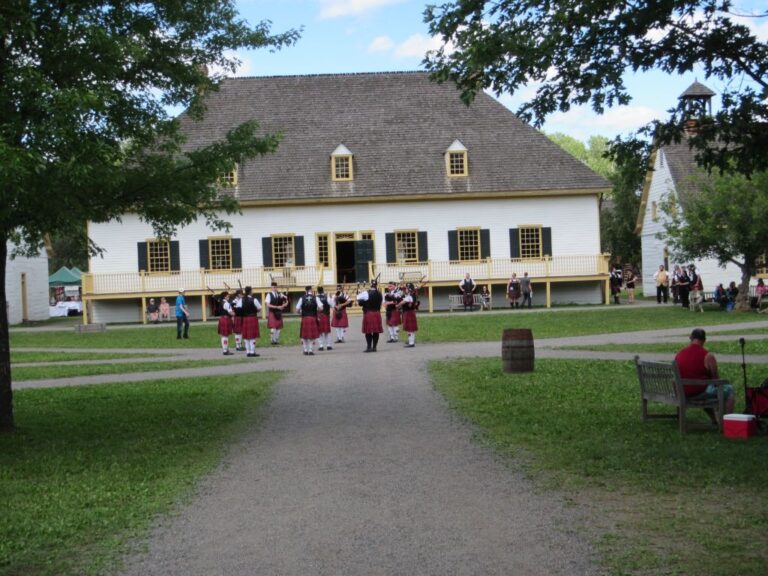
The day we arrived was the start of a combined event at the fort: annual Rendezvous, combined with a 50th anniversary for the fort.
Rendezvous was a two week event held every year at the fort (in the 1800’s). During this period many voyageurs would come to the fort to meet, trade, swap lies (I made up that bit). Also, the NWC doctor was in town for that two week period, so common ailments like foot rot and dental issues could be addressed. The doctor had no formal training, but had served a 4 year apprenticeship under another doctor. In comparison the baker served a 7 year apprenticeship before going out on their own.
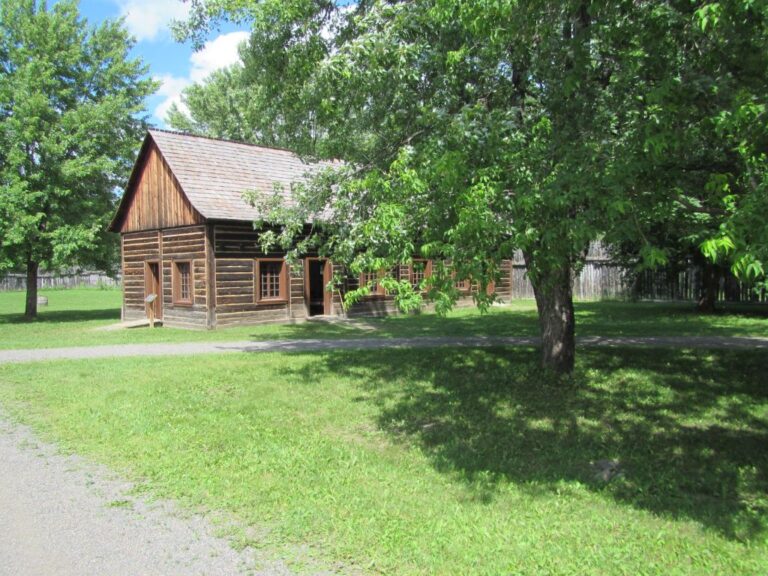
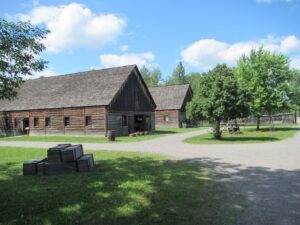
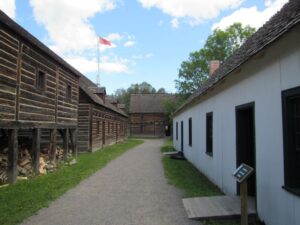
The buildings are in incredible shape, and there are lots of them.
During the annual Rendezvous, the fort’s population would swell from the usual 30 full-time inhabitants to over 2000. Many voyageurs came from Athabasca, a 3 month trip (each way) by canoe.
The town also contains many tradesmen and their workshops. We saw workshops for: cooper, canoe builder, tinsmith, armourer, baker, woodworker and apothecary. Each of these workshops contained individuals, dressed in period costume, who were actually working at their trade. The cooper was making barrels. The canoe builder was making birch-bark canoes. The baker was baking bread, etc.
The canoe builder was interesting to talk to. There were three main types of canoes in use. Smaller 1 or 2 person canoes (about 16-18′ in length) used by the voyageurs (hunters/trappers). Large cargo canoes (“canot de maitre”) that could hold 10-12 men and 10,000 lbs of cargo, used to transport goods between Lake Superior and Montreal. Smaller cargo canoes (“canot du Nord”) that held 4-6 men and 4000 lbs of cargo, used for local cargo movement.
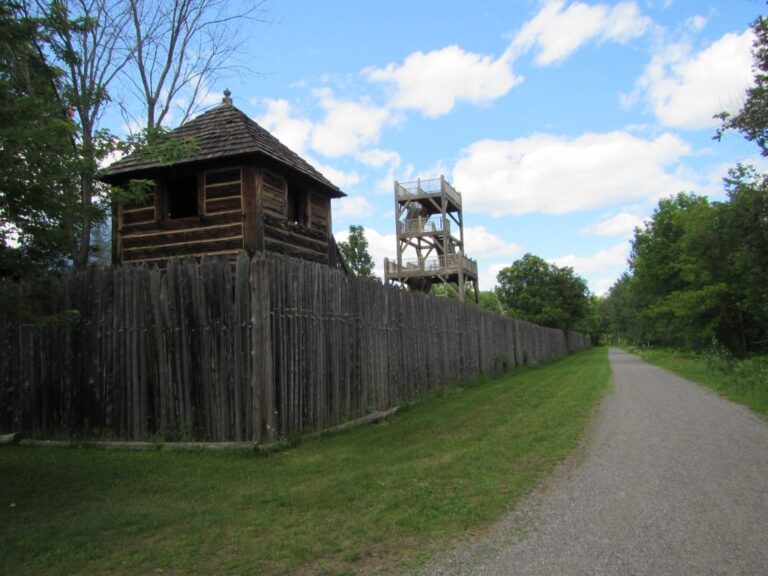
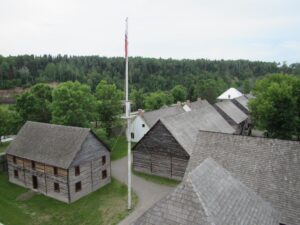
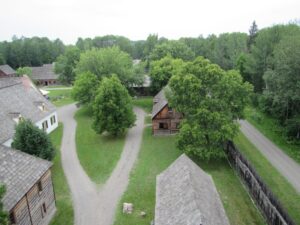
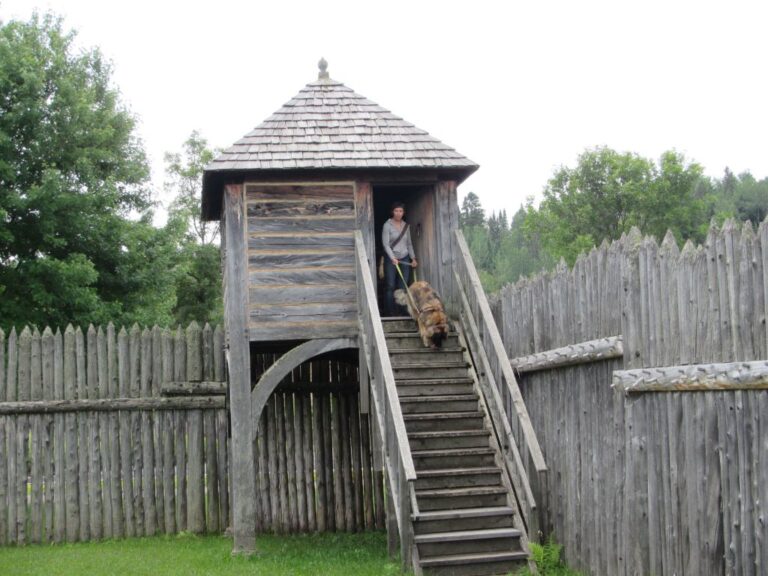
Changing of the guard.
Some guards are faster than others.
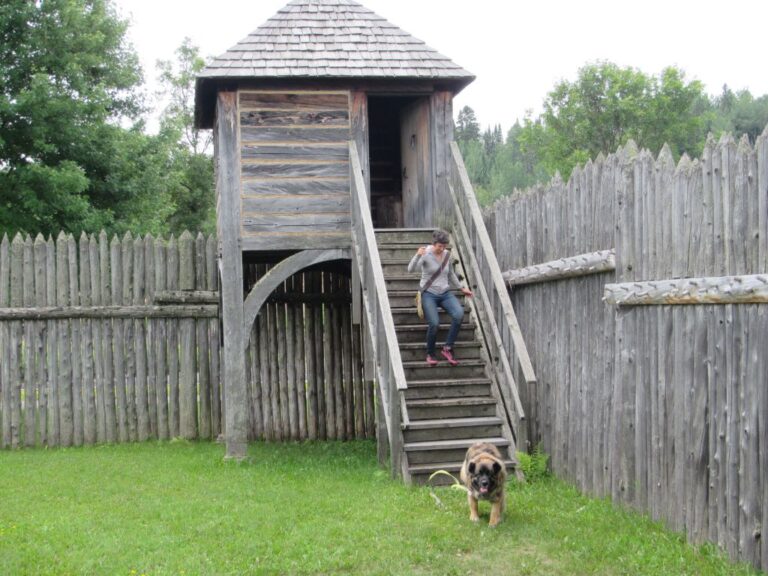
All of the buildings in the fort are constructed of wood, with two exceptions: the powder store (photo) and a stone storage building (not sure what they stored here, either some important, or something combustible I would guess).
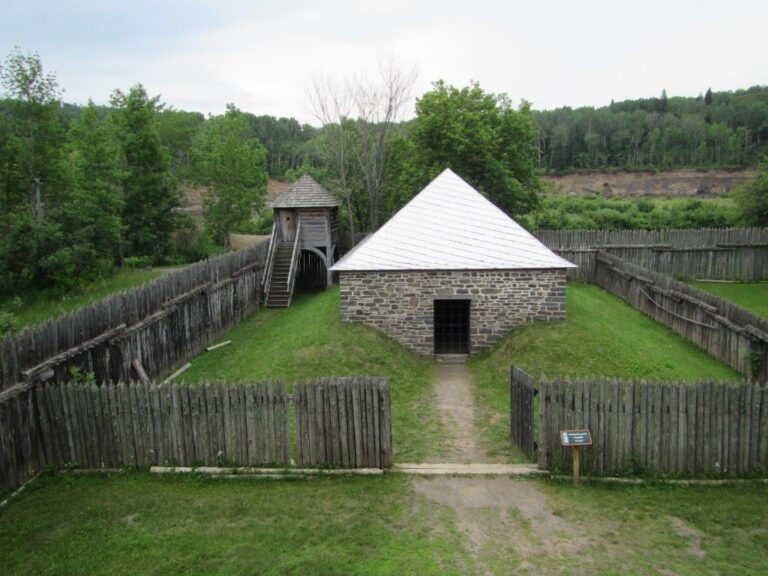
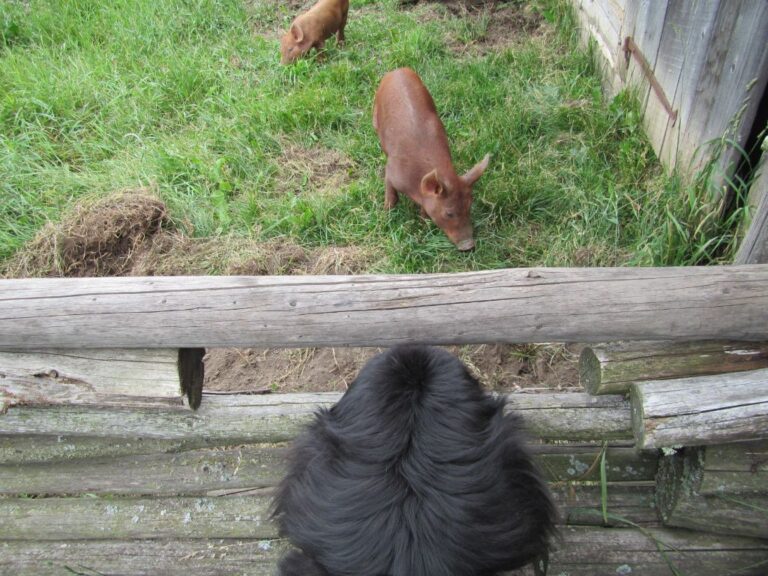
Immediately outside the walls of the fort was a small farm with several buildings including an ice house/dairy.
There were a variety of crops and animals around, including chickens, sheep, and pigs – which seemed to capture Lump’s interest.
Trip Summary:
Depart: Kakabeka Falls Provincial Park, Ontario 12:00 pm July 8; Odometer: 232795 km
Arrive: Fort William Historical Park, Ontario 2:00 pm July 8; Odometer: 232833 km
Gas Summary:
none

